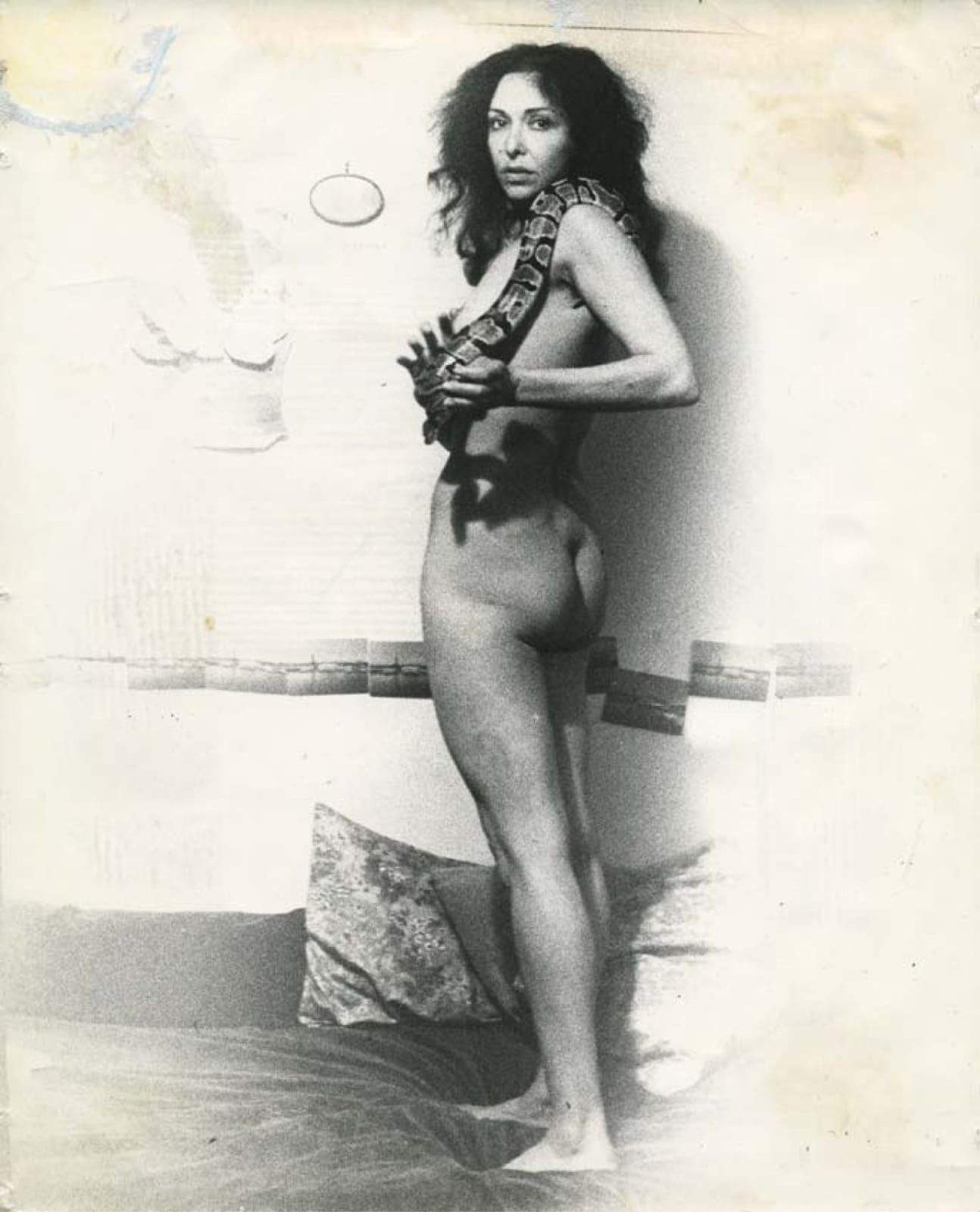
Carolee Schneemann
Untitled (Boa Constrictor), 1970/1976
Gelatin silver print
27.9 x 20.3 cm
11 x 8 in
Framed: 32.39 x 27.31 cm
12 3/4 x 10 3/4 in
11 x 8 in
Framed: 32.39 x 27.31 cm
12 3/4 x 10 3/4 in
Schneemann (b. 1939, Fox Chase, PA – d. 2019, New Paltz, NY, USA) was a seminal, trailblazing artist with a far-reaching oeuvre spanning sixty years. She received a BA from...
Schneemann (b. 1939, Fox Chase, PA – d. 2019, New Paltz, NY, USA) was a seminal, trailblazing artist with a far-reaching oeuvre spanning sixty years. She received a BA from Bard College, NY, and an MFA from the University of Illinois. She held an Honorary Doctor of Fine Arts from the California Institute of the Arts and Maine College of Art. In 2017, Schneemann was awarded the Golden Lion for Lifetime Achievement at the 57th Venice Biennale.
Schneemann examined themes of sexuality, identity and gender through painting, performance, installation and photography. In much of her work, Schneemann explored her own identity as a woman in a patriarchal society. All of Schneemann’s work is rooted in her formal training, and throughout her career she insisted on being thought of as a painter. By connecting the kinetic nature of her paintings and assemblages to her radical performances, films and photography, Schneemann’s work has made a permanent mark on the history of art.
In 1970, the artist moved to London, where she continued to make work using her own personal body and space. This photograph, Boa, was taken in her London apartment in Belsize Park by Alex Agor, and features Schneemann standing on her bed with a snake wrapped around her body. Many items in the image already existed in the artist’s home before the photograph was taken, such as the postcards of Venice and Renaissance paintings, and the pillowcases. In fact, these floral Liberty print pillowcases were owned and loved by Schneemann for most of her life. The artist recalls that the boa, which was called Barbara, was free to roam the apartment some of the time, but mostly chose to remain curled up in a corner. She has also stated that did not particularly enjoy the sensation of the snake’s skin against her own: “I was pissed off that they made me take off my clothes and put this snake around my neck – you can see I’m pissed off in the photo.”
Schneemann examined themes of sexuality, identity and gender through painting, performance, installation and photography. In much of her work, Schneemann explored her own identity as a woman in a patriarchal society. All of Schneemann’s work is rooted in her formal training, and throughout her career she insisted on being thought of as a painter. By connecting the kinetic nature of her paintings and assemblages to her radical performances, films and photography, Schneemann’s work has made a permanent mark on the history of art.
In 1970, the artist moved to London, where she continued to make work using her own personal body and space. This photograph, Boa, was taken in her London apartment in Belsize Park by Alex Agor, and features Schneemann standing on her bed with a snake wrapped around her body. Many items in the image already existed in the artist’s home before the photograph was taken, such as the postcards of Venice and Renaissance paintings, and the pillowcases. In fact, these floral Liberty print pillowcases were owned and loved by Schneemann for most of her life. The artist recalls that the boa, which was called Barbara, was free to roam the apartment some of the time, but mostly chose to remain curled up in a corner. She has also stated that did not particularly enjoy the sensation of the snake’s skin against her own: “I was pissed off that they made me take off my clothes and put this snake around my neck – you can see I’m pissed off in the photo.”